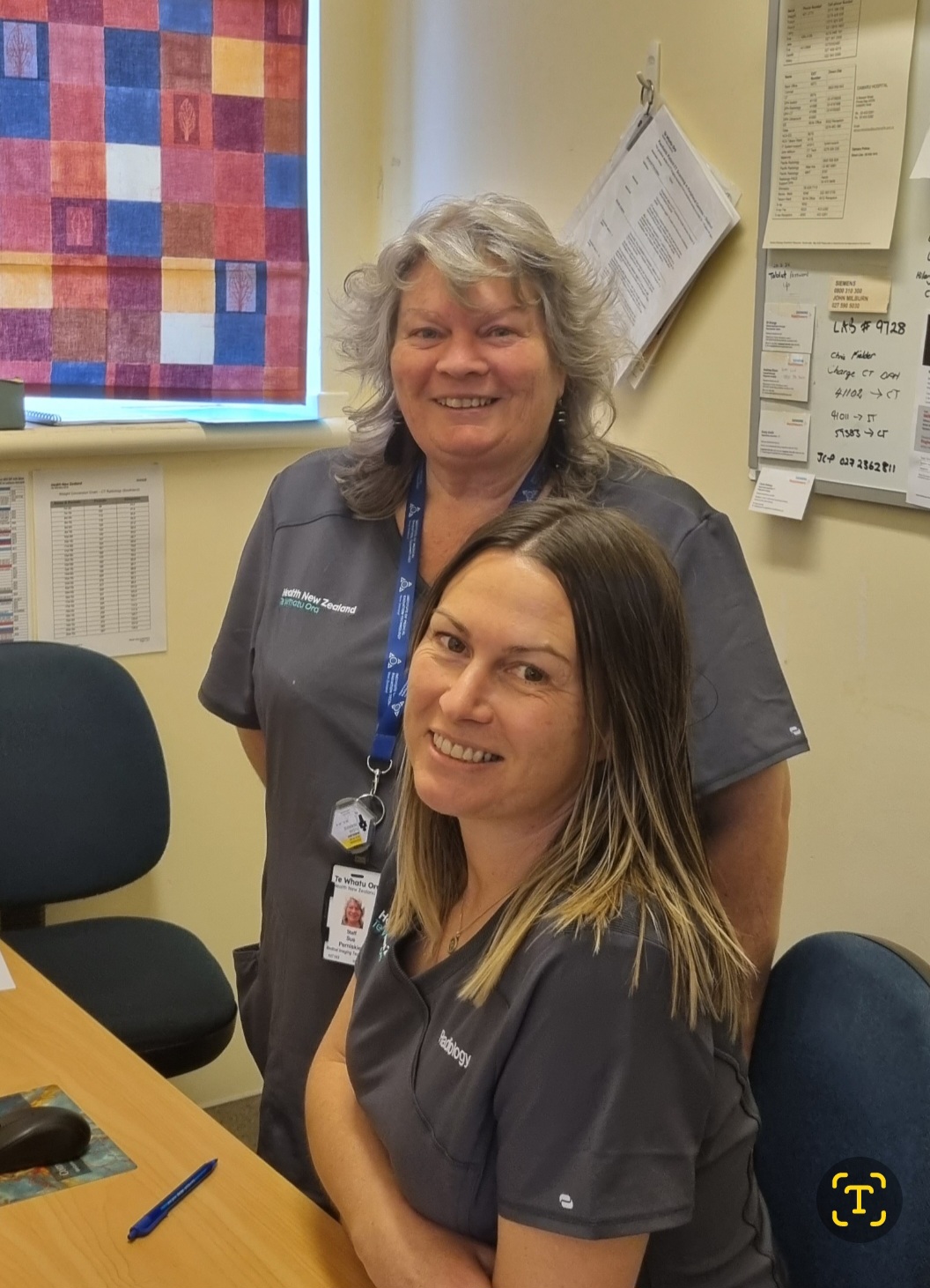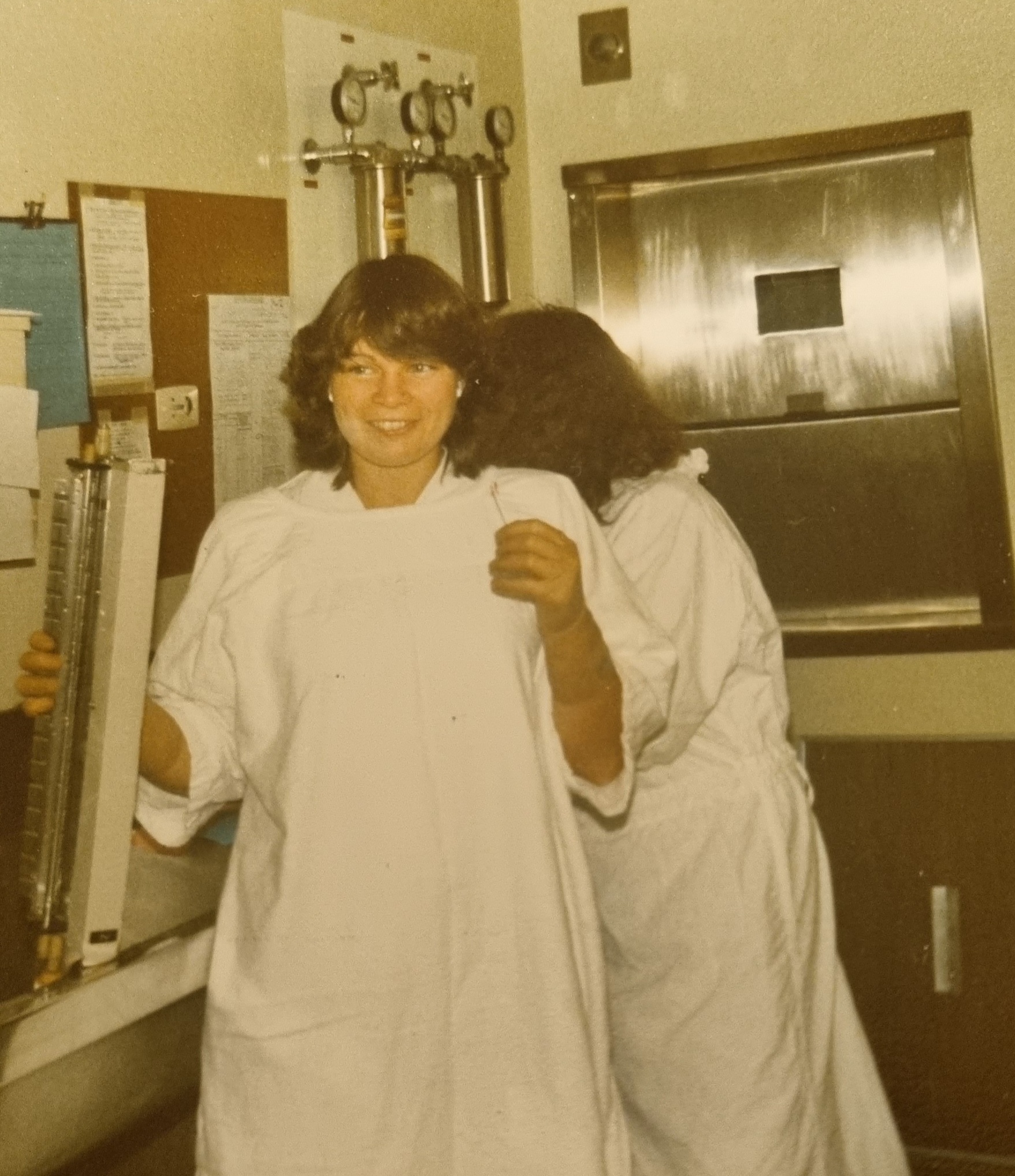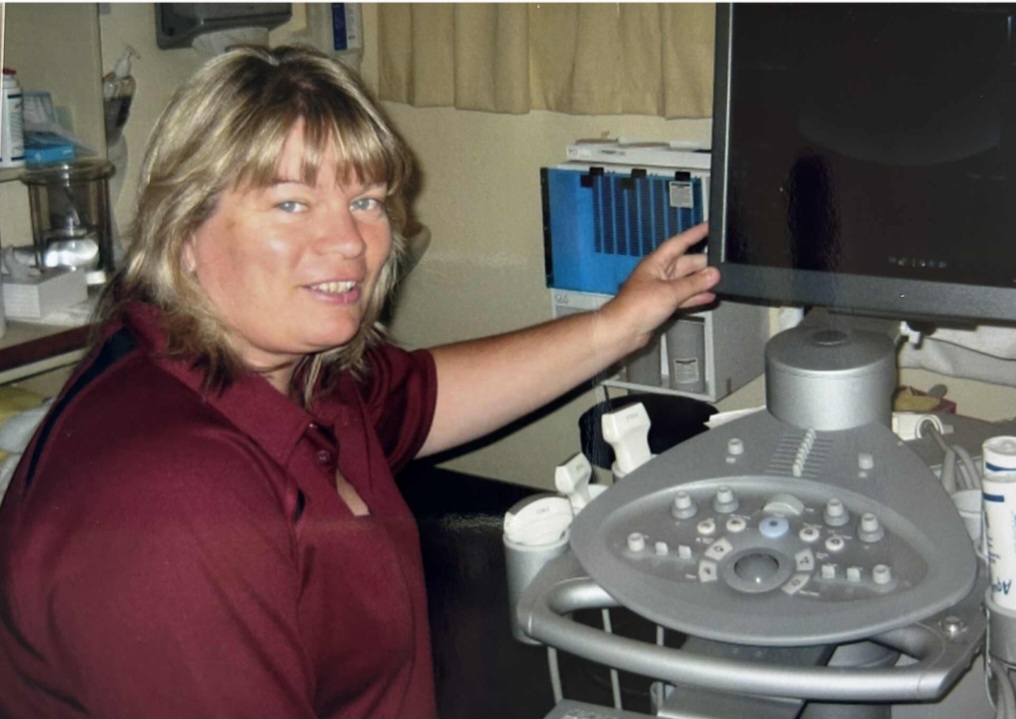“In a small hospital, you have to think on your feet”
Forty-seven years after beginning radiography training, Sue Perniskie is retiring from her career as radiographer and sonographer at Oamaru Hospital.
At various times Sue has been the APEX delegate and charge sonographer. We caught up with Sue to discuss her career, how radiology has changed, and the challenges of practicing in a small hospital.
Where and when did you begin your career as an MIT?
In 1978 in Dunedin, I was employed to study for the diploma of the College of Radiographers in England. I’d been lucky enough to meet some radiography students while I was living in the nurse’s home working as a lab assistant, they really inspired me to study radiography.
And what was it like back in the 1970s and an early 80s practising radiography?
We trained on site, half practical, half lectures and we were paid. I found a document, $3686 per annum which increased about $1000 a year until we were qualified. It was great camaraderie and a really good way to train; we had a class of ten. We worked on site under the guidance of the qualified staff. There was no CT, only nuclear medicine, general x-ray, fluoroscopy, tomography, theatre radiography and ward mobiles.
And then when you finished your training, you stayed in Dunedin to work?
I stayed in Dunedin and worked in nuclear medicine for a couple of years and then married and came to Oamaru in 1982. I’ve been here for 43 years. I had 7 years away from radiography while I had a family, I worked as a bank teller during that time and in a nursery propagating Oamaru’s famous Kakanui tomatoes. In 1987 I started at Oamaru Hospital which was the old original hospital on the hill, it was fully functional at the time with 2 general surgeons and a big maternity hospital. We were still employed by Dunedin hospital at that stage with just general x-ray and visiting doctors for barium enema sessions and later Ultrasound – it was a great place to work.
When did you also become a sonographer?
In the late 1990s I asked my manager in Dunedin if I could update my diploma to a degree in radiography and at the time she said, “No we need a sonographer” so that was the start of my ultrasound training, which I completed in 2002. Lots of driving up and down to Dunedin but great colleague support from Dunedin right through that process. I maintained my dual scope in radiography and did a lot of weekend and on-call work.
How did Oamaru Hospital come to be run by Waitaki District Health Services?
Around 2000 the old hospital on the hill moved down onto a flat site in Oamaru which had been purpose built around the shell of an old school. We were still employed by Otago DHB at the time, but the rest of the hospital had transitioned to Waitaki District Health Services, the community trust running the hospital. In 2007 Waitaki District Health Service took over radiology, but they would not employ us under the same terms and conditions of the MECA which we had with Otago. So, the department was closed, our job offers were withdrawn and the positions were advertised. That’s when APEX really stepped in for us and was invaluable in negotiating on our behalf in what was a stressful time for us all. Eventually we were reemployed on a new contract with the same MECA terms and conditions. No one turned up to take our jobs and that really proves the strength of APEX, we couldn’t have done it on our own.
And then then you were employed basically by the trust from 2007 through to 2024?
During that time, I worked as a sonographer but kept dual scope doing radiography and on call. In 2014 I had a shoulder rotator cuff repair caused by repetitive injury from scanning. I was sole sonographer up until that time. From about 2020 I slowly transitioned back to radiography, I also trained in CT and Oamaru got its first CT scanner in about 2007. In 2024 we again used APEX as we came back to work under the umbrella of Health New Zealand Southern.
Looking back on your career, what did a good day at work look like for you?
I’ve always loved my job. Even though I’ve stayed firmly planted in Otago, it’s been a great career. I’ve loved all the colleague support and the lifelong friends. There have been so many options for career progression and further study. The job has really grown as I’ve grown. With ultrasound in the early 1980s in Dunedin then CT then MRI. I enjoy working with people and helping people even if it’s in their tough times. I think you can really make a difference in this career.
You’ve really enjoyed this job?
Yes, very much, my daughter Robyn also trained as a radiographer. She is in fact now my boss as the Charge in Oamaru, which I guess really shows life’s progression. I also have two nieces, Lil and Tyla who have both trained in radiography and Lil’s gone on to be a sonographer. They have all travelled and worked overseas but have now returned to work in the South Island.
What are some of the challenges of radiography in small hospitals?
Definitely fatigue over the years with incorporating the on-call and the heavy demand that’s always required. Sometimes we got down to pretty low staff numbers, one in two on call. You really have to learn how to deal with that and know when to say stop. Also being in a small community, you know so many people and sometimes that puts extra pressure on you. We’ve had great colleague support from Dunedin over the years. It’s been wonderful and I think a rural hospital needs that support from the bigger centres to work well.
What have the biggest shifts and changes in radiography practice been over your career?
When you come to a small place, you have to become a much more independent worker. You have to think on your feet. You haven’t always got someone else to ask. There’s no radiologist on site.
The digital age has changed things, with a lot of changes from the days of manual processing to digital processing. We had issues in the early 2000s with our silver recovery unit not extracting correctly and some staff injuries due to fumes in the dark room. So, it’s great to have gone away from working with chemicals and the issues which came from this.
How are you going to spend retirement?
Retirement will be easy. I love my garden. We love biking -just doing all those things that a 9-5 job, five days a week, stops you from doing. I’m very lucky – my three children and all my grandchildren are living nearby.
So, would you recommend Oamaru as a place to work for sonographers and radiographers?
Oamaru is a great place and we’ve been lucky over the years that we’ve had students coming through ARA, usually a local student and so many of them have returned to us as radiographers, even if just for short-term work. It’s a great career and I would encourage anyone to look at doing it.




